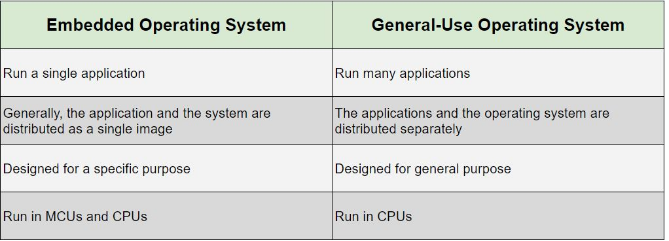Every day we use modern devices like coffee machines, headphones, security systems that optimize our time and help with simple daily processes. But do we think of how they are working, what helps them to perform those functions that we expect from these devices?
We can not see visually how it works, and in this article, we will discuss the computer machine and its filling that are responsible for all features of developments that surround us.
Embedded software engineering is one of those processes. It controls the computer machines and devices using software engineering. Integration software engineering with non-computer devices leads to the creation of an embedded system. These systems are mostly used in such areas as medicine, electronics, manufacture, aviation, banking, office, security, etc. An embedded system needs a wide range of programming tools and operating systems. There are several most popular areas where embedded systems are used:
- Audio, including DSP
- Graphics and video
- Motor control
- Wireless connectivity (Bluetooth, Wi-fi, Zigbee)
- Wired connectivity (USB, Ethernet, CAN, LIN)
- Mass storage
Embedded software is a part of a bigger system like automated equipment, smartphone, or smartwatches. Embedded systems give a real-time response to users and operate in conformity with the size of memory, power of the processor, and energy charge. Embedded software has to be ready for updating and constant changes in the operating system as some components and sensors can be changed. Also, this system needs to be portable and autonomous. One more important requirement is stability. The Embedded system must work under all circumstances with no errors. Software Development Life Cycle (SDLC) for embedded software is characterized by more strict requirements and limitations in terms of quality, testing, and engineering expertise.
Use of embedded systems
As we have already mentioned above embedded systems are in need in many industries. However, there are areas where this software is crucial like Telecom, Banking, Home appliances, Aerospace. Let’s describe some of them for better understanding:
Automotive
Today automotive solutions take a great part in using embedded systems among different types of applications. Embedded systems make use of customer safety, maintenance, infomercial, and driver awareness for automotive apps. Moreover, these systems are used for improving and widening the functions of the application like detailed navigation, driver assistance, and others. So if you want to add new features to your solution, the need for embedded systems will only increase.
Healthcare
The medical area is actively being digitalized and requires the development of embedded systems. These can be wearable and portable devices that control and record the state of your health and monitor the necessary signs. Embedded systems can be large and small and are responsible for different activities and broad them to the doctors. These systems give the possibility to control the patients in medical facilities as well as on a distance.
Consumer Electronics
Embedded systems are a crucial component of every electronic product. For example, connecting consumer electronics like smartphones, smartwatches, security systems give great value to the embedded systems.
Composition of Embedded Systems

The filling of the embedded system depends on the level of complexity of the software solution, its goals, requirements, and the sphere of usage. Modern embedded systems use microcontrollers, microprocessors, and other programming tools for integrating with devices.
Nevertheless, there are main units and elements that fill in any embedded system. They are the following:
- User interface;
- Input/output interfaces;
- Processor;
- Memory;
- Timers;
- Serial communication ports;
- Circuits to connect to other systems.
Embedded Software Development Tools

There are already popular tools for embedded systems development on the market. They are widely used for different programming languages to control the whole process of software development. Here are some of them:
PyCharm
PyCharm is an integrated development environment suitable for Python programming language. It gives the features for code analyzing, design exterminator, and testing. However, it also supports JavaScript, TypeScript, SQL, HTMLCSS, AngularJS, NodeJS. This IDE is widely used for operating systems like Windows, Mac, and Linux. So what exactly does this tool do? The features are the following:
- Intelligent code completion.
- Error highlighting and fixing.
- Automated code refactoring.
- Easy project navigation
- Support for web development frameworks such as Django, Flask, Google App Engine, Pyramid, and web2py.
- Integrated testing.
- Remote development on virtual machines.
WebStorm
WebStorm is another integrated development environment created by the JetBrains company. It is mostly used for developing JavaScript, HTMLCSS software. The main functions of this development tool are:
- Automate complete the code
- Code analysis
- Code navigation
- Debugging
- Integration with version control systems
- Refactoring
Qt Creator
Qt Creator is considered to be the most popular integrated development environment. It is used for developing all types of solutions among which are the medical sphere, mobile applications, automotive, and others. Qt Creator is used for developing embedded software in C++, JavaScript, and QML. So there key features that suit to different types of solutions:
- Cross-compiling
- Autocompletion
- Syntax highlighting
- Virtual keyboard
- On-device debugging
- Functional safety
- 3D/2D user interfaces
MPLAB X
MPLAB X is an updated version of the MPLAB integrated development environment built by Microchip Technology. This tool is created to develop solutions for diverse types of microcontrollers and digital signal controllers. It is supported by Windows, Mac, and Linux operating systems. Talking about features, some of them should be mentioned:
- project managing
- writing and editing code
- debugger
This tool is very popular for a reason. Compared to other IDEs it has some benefits like simple usage, auto-completion that helps to complete the header files automatically, real-time checker of syntax to define and change the errors. Also, it has an improved function of debugging – it highlights the errors with the use of the cursor.
Types of Embedded Software Development Tools
Embedded software as any development needs development tools for future production. Here is a shortlist of several types of embedded software development tools:
Editor
The first and key tool for embedded system development you need is a text editor. Its function is to write source code in programming languages C and C++ and then save it as a text file. A bright example of a programming text editor is Geany. It supports C, JS. PHP, HTML. Python and many other types. So what are the main features of this text editor? It highlights the syntax, automatically completes a symbol name and closes XML and HTML tags, and has got code folding and navigation.
Compiler
Compiler is the second main feature. As the source code is written in a certain complicated programming language, this toll transforms the code into a simpler machine language code to make the machine understand it accurately.
Assembler
Assembler is a crucial tool that transforms human-written code into a language clear for machines. It is a more complex process that a compiler does. It converts the code into object code and then into machine language. This tool is actively used for Linux and Mac operating systems.
Debugger
When talking about software development, this process can not be done with the quality assurance of the product. A debugger is a testing tool that finds and deletes bugs and errors inside the code. Also, it shows the places where errors were found for a quick rewriting by developers and eliminating future mistakes. As for example, IDA Pro is a testing tool that is widely used for popular operating systems like Windows, Linux, and Mac.
Linker
The linking tool creates the whole picture of the code. As the code is written and parted into smaller pieces and modules, all of those pieces have to be gathered and combined in the final result. That’s how the program is creating.
Emulator
This tool gives the ability to see how the software will function in real-time. Emulator helps to define the wrong activities and change them to reach the perfect work of the code. After this process, the code can be embedded in the device.

Developers` team for embedded software
For developing a functional and full-cycle embedded system, you need to find a team of developers who are professionals in that area. It is important for them to have experience in software architecture, design, testing, and system integration. The quantity of members of the developers` team depends on your individual solution and can be different. You have to be sure that this team will propose all the services you will need for the accurate functioning of your software solution. In general, there is a shortlist of a basic developers` team you will need:
- 2 Backend Developers Senior
- 1 UI/UX Designer Intermediate
- 1 DevOps Senior
- 2 QA specialists Intermediate
Conclusion
Taking everything into account, an embedded system is a microprocessor that is created to perform a specific task. To describe this system shortly, there should be mentioned three main elements of embedded software:
- hardware;
- application software;
- RTOS – a real-time operating system that provides the scheduled processor run to control the latencies.
Embedded software solutions are now used in many areas. As this development is not very expensive and can be easily customized, it saves the company expenses and increases the efficiency of the work processes. Simultaneously, it adds new processes and challenges for the solution and makes it more complex from inside. It is very important to find and choose reliable and experienced developers who will help you to define the right development tools, programming language, and framework libraries for creating successful embedded software.






